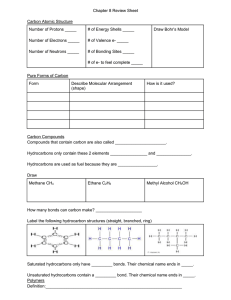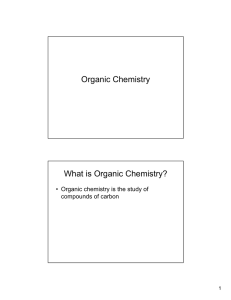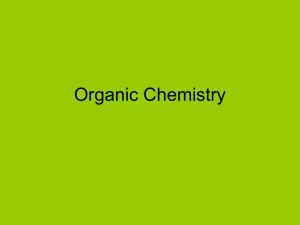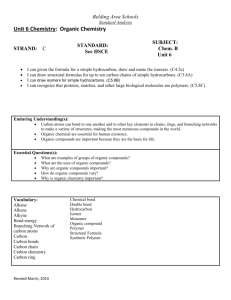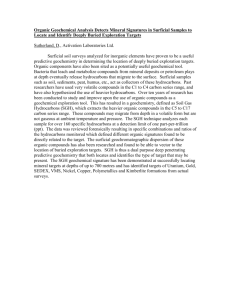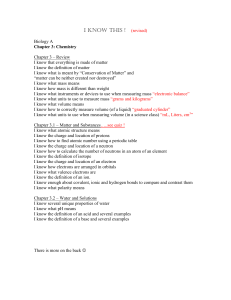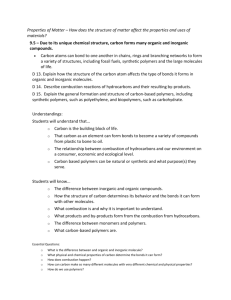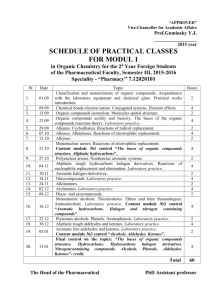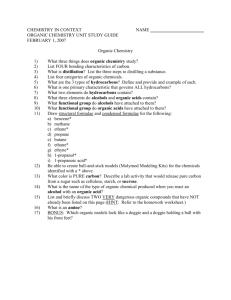Organic Chemistry Cu..
advertisement
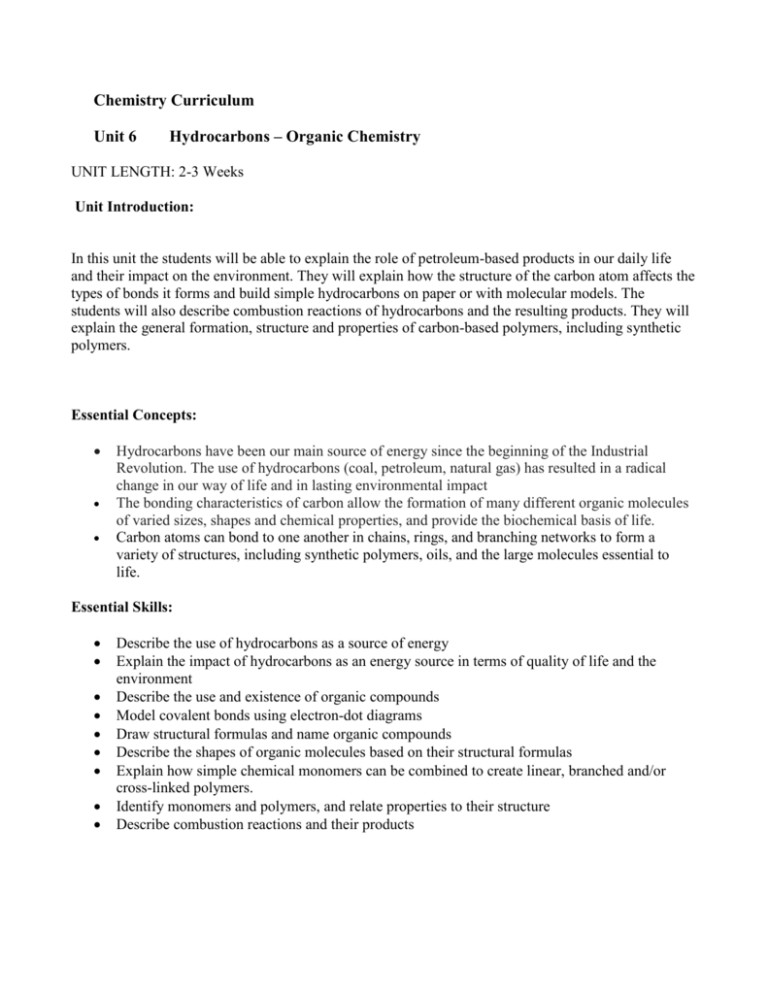
Chemistry Curriculum Unit 6 Hydrocarbons – Organic Chemistry UNIT LENGTH: 2-3 Weeks Unit Introduction: In this unit the students will be able to explain the role of petroleum-based products in our daily life and their impact on the environment. They will explain how the structure of the carbon atom affects the types of bonds it forms and build simple hydrocarbons on paper or with molecular models. The students will also describe combustion reactions of hydrocarbons and the resulting products. They will explain the general formation, structure and properties of carbon-based polymers, including synthetic polymers. Essential Concepts: Hydrocarbons have been our main source of energy since the beginning of the Industrial Revolution. The use of hydrocarbons (coal, petroleum, natural gas) has resulted in a radical change in our way of life and in lasting environmental impact The bonding characteristics of carbon allow the formation of many different organic molecules of varied sizes, shapes and chemical properties, and provide the biochemical basis of life. Carbon atoms can bond to one another in chains, rings, and branching networks to form a variety of structures, including synthetic polymers, oils, and the large molecules essential to life. Essential Skills: Describe the use of hydrocarbons as a source of energy Explain the impact of hydrocarbons as an energy source in terms of quality of life and the environment Describe the use and existence of organic compounds Model covalent bonds using electron-dot diagrams Draw structural formulas and name organic compounds Describe the shapes of organic molecules based on their structural formulas Explain how simple chemical monomers can be combined to create linear, branched and/or cross-linked polymers. Identify monomers and polymers, and relate properties to their structure Describe combustion reactions and their products LIST OF RECOMMENDED ACTIVITIES Structure of Organic Compounds Review: Valence Electrons, Electron-Dot Structures, Covalent Bonds, Balancing Equations Molecular Models Lab 1: Organic Compounds Hydrocarbon Naming: worksheets and games Hydrocarbons and Energy Reading: Hydrocarbons – Energy and the Industrial Revolution Demonstration/Lab: Distillation of a Mixture of Hydrocarbons – Chemistry in the Community, p. 216-217 Video: Testing the Greenhouse Effect (Discovery) Discussion / Debate: The Positive and Negative Impacts of Hydrocarbons Research Project: Alternative Sources of Energy Thermochemistry Lab: Determining the Heat of Combustion for Paraffin Wax Organic Compounds Carbon in Foods Mini-Lab: Burn Food and Study the Carbon Residue Molecular Models Lab 2: Students build models of all isomers of a simple organic formula, e.g. C4H10O, and then research the properties of the compounds. Honors students will describe the relationship between structure and properties (for example boiling point vs. polarity) Performance-Based Task: Paper Or Presentation On Consumer Organic Compounds (Cosmetics, Pharmaceuticals, Plastics, Nanotubes, Biofuel, Soap) Demonstration: Synthesis Of Acetylsalicylic Acid (Active Component Of Aspirin) Performance-Based Task: research the structure of a simple organic compound, e.g. acetylsalicylic acid, ibuprofen, citric acid, menthol, cinnamaldehyde, adrenaline, glucose, sucrose, etc., build molecular model and draw electron-dot structure. Polymers Molecular Models lab 3: Students build monomers (e.g. propylene or styrene) in groups or individually. The class then assembles the monomers into a polymer. Slime Lab RESOURCES Discovery Education Streaming Video: Elements of Chemistry: Carbon: The Element of Life (20 minutes, video Quiz included). MythBusters Discovery Education Streaming Video: Testing the Greenhouse Effect (42 minutes). Chemistry in the Community, W. H. Freeman & Co., Unit 3.
